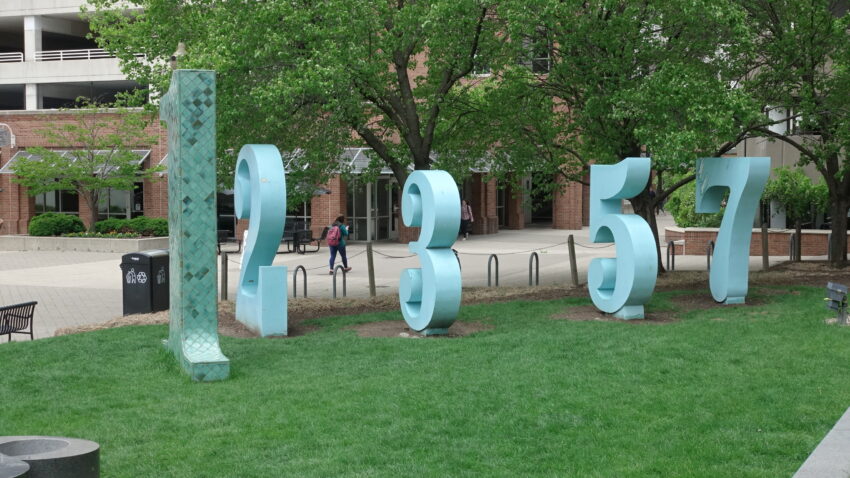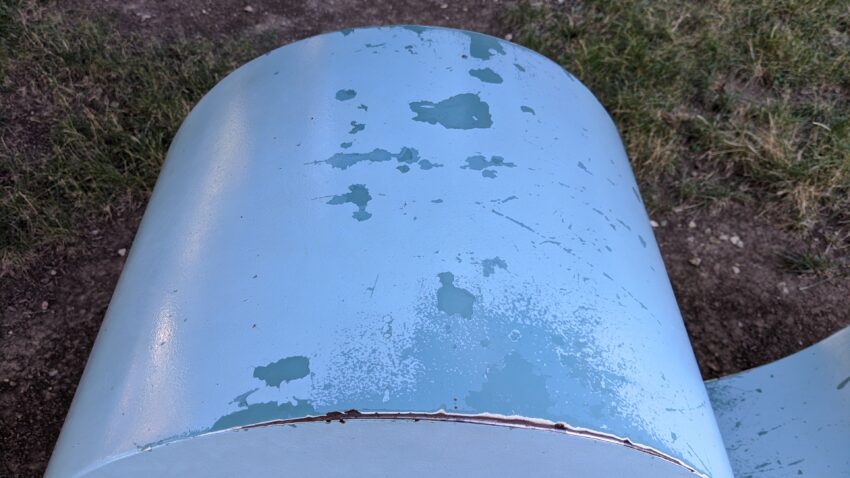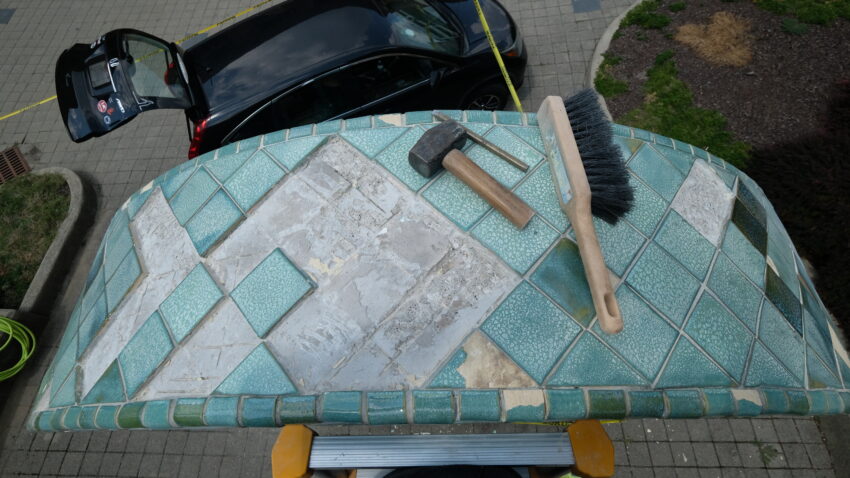Math and science have their own values or constants which express a relation or property that remains the same in all circumstances. It was this notion which inspired the outdoor artwork, Garden of Constants, 1994 by Barbara Grygutis. Any works of art installed outdoors require constant outdoor sculpture conservation.

The larger than life numbers from 0 through 9 that compose the Garden of Constants are located beside the Department of Electrical and Computer Engineering on the Ohio State University (OSU) Campus in Columbus, Ohio. The materials include ceramic, painted steel, granite, concrete and bronze.
As the artist’s thought process was described in a 2017 interview with OSU, “…Garden of Constants consists of two major components: 10 large number sculptures scattered throughout the site, and a collection of numbers and symbols set into the main walkway pavement. These insets are the mathematical and formulaic constants used primarily in electrical engineering and computer science.”
For art conservators, one constant is that all materials are subject to agents of deterioration. Outdoor sculpture is especially vulnerable due to regular exposure to the elements and public interaction. Without constant outdoor sculpture conservation, an outdoor sculpture’s days are numbered. Thankfully OSU contacted McKay Lodge Conservation team to perform a treatment of Garden of Constants this past summer.

Like many outdoor sculptures, Garden of Constants not only endures rain, snow, and hot summers, but since the artwork is located on a college campus, students regularly interact with the artwork. Over the years, tiles were missing, components were scratched or incurred losses in the substrate, paint was failing, and coatings needed replacement.

Marcin Pikus, Conservator of Stone Sculpture and Architectural Features, along with and Emmett Lodge, NACE Certified Industrial Coatings inspector and experienced coatings applicator, both of McKay Lodge Conservation Laboratory, traveled to Columbus, Ohio to perform the necessary outdoor sculpture conservation treatment.
Treatment began with numbers 0 through 9. The glazed tile “0” and “1” were repaired by removal of all existing damaged tiles, and replaced with new tiles obtained from the artist which were bonded to the existing concrete with new mortar. Repaired areas were then grouted. Both sculptures were sealed with tile and grout sealer once repairs were complete.

The painted numerals “2”, “3”, “5”, and “7” were sanded to remove all existing failed coatings down to the nearest well-bonded layer. Rusted areas were sanded to bare steel to remove corrosion. Built-up soil at the bases of the numerals was also cleared until metal was exposed.

Corrosion areas were spot treated with an acidic cleaner, and then all surfaces were primed. After priming, the numerals received two top-coats of color which was chosen by the artist.
The brass “6”, which had originally been identified as polished brass, could not be polished as originally proposed due to the discovery of a factory anodized finish which was now badly degraded. After consultation with the artist, a paintable brass finish was chosen as a topcoat instead.

The cast concrete “9” was chemically stripped and cleared with pressurized water to remove all existing paint and surface contamination. The concrete was re-stained in a new color selected by the artist. Silicate-based paints were used as the color coat for the concrete surfaces.
After the outdoor sculpture conservation treatment was complete, the Garden of Constants will continue to bring enjoyment to OSU students and visitors on campus.

